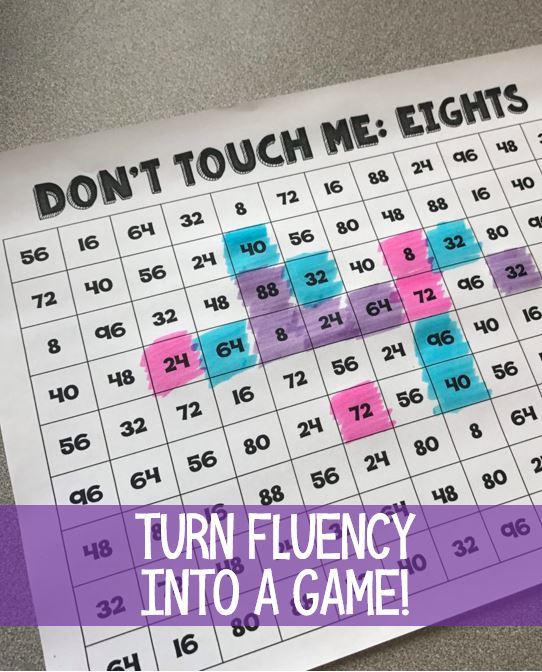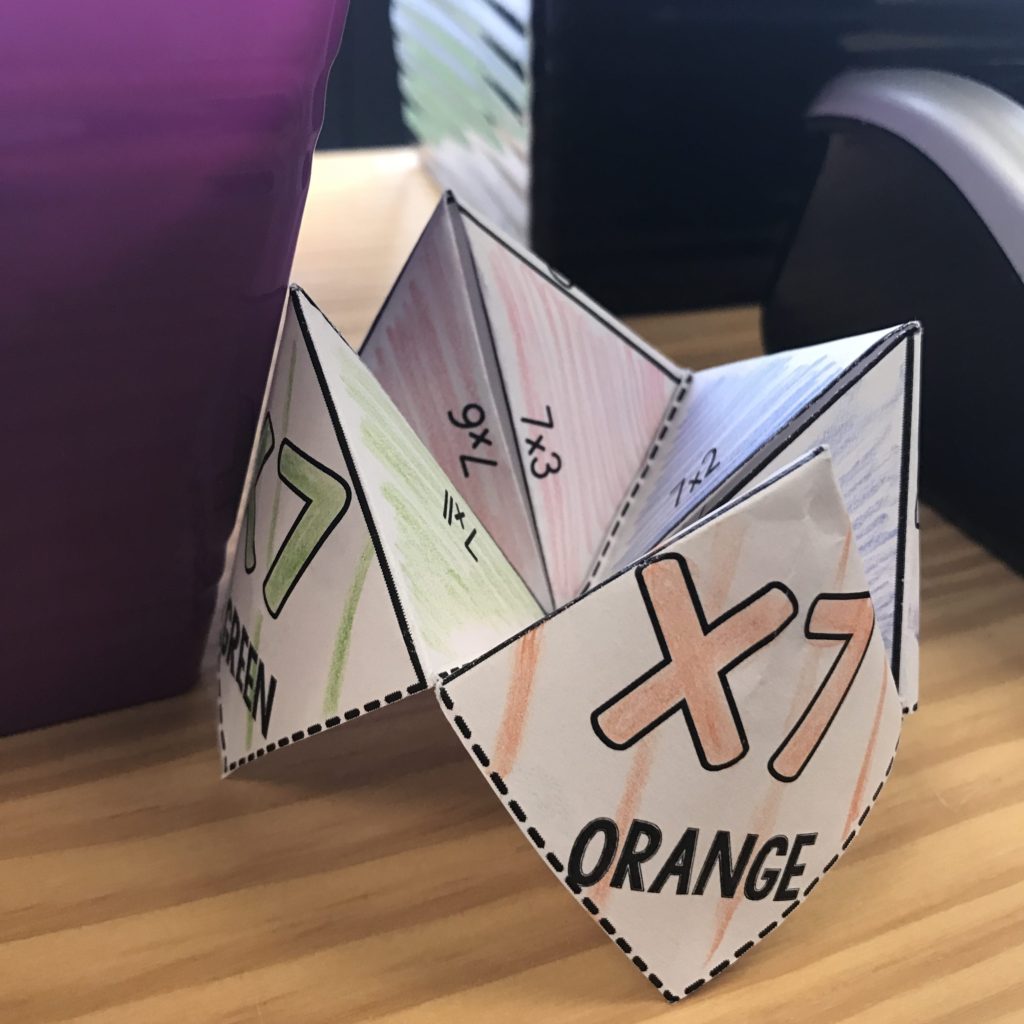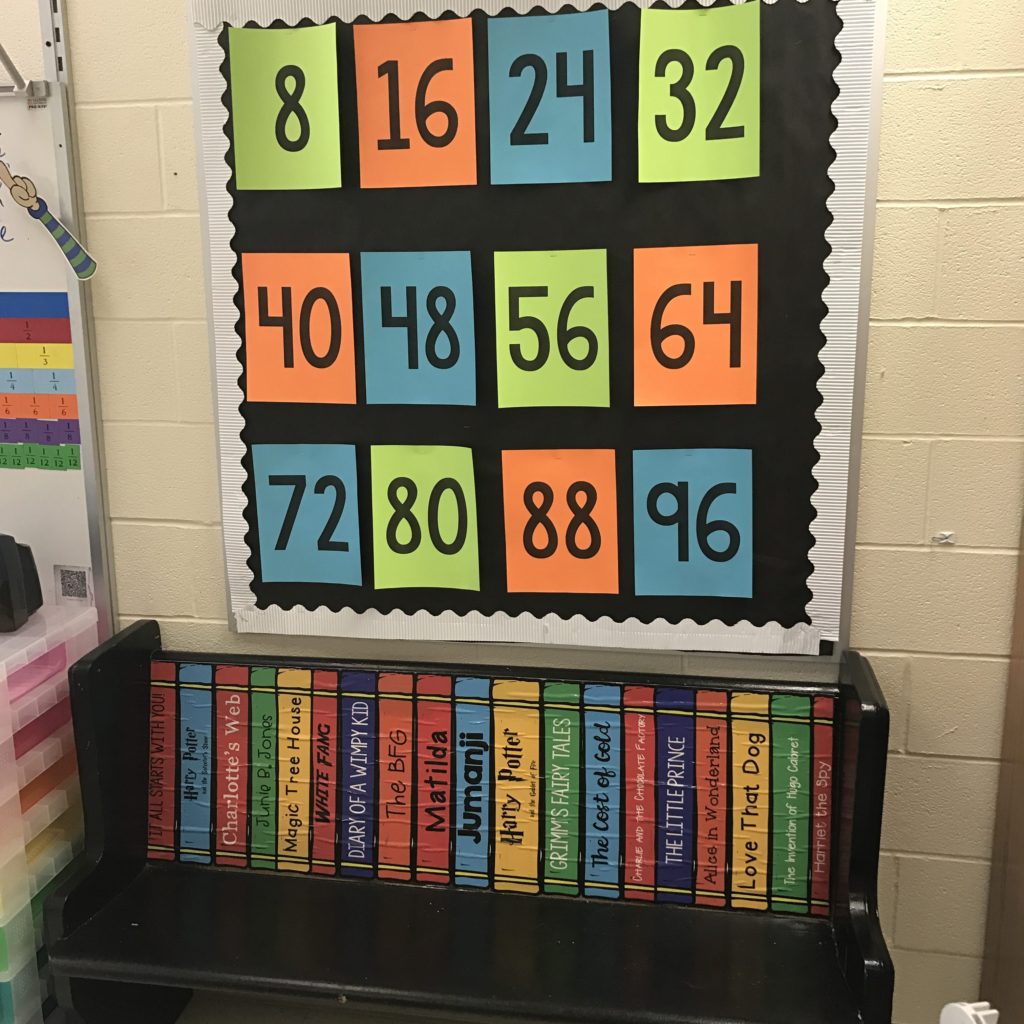Multiplication Fact Fluency is ALWAYS something we are practicing in our classroom, even from early on in the school year. I have tried many things over the years, but what I always come back to is that learning multiplication fact fluency must be done THE FUN WAY! We play games, do timed-drills (yes, we still do them, and YES, they do work), and just have fun with our facts. The kids need to be engaged and in charge of learning their facts…and I hold them accountable.
Below are a few things that we do in our class that makes it just a bit more fun for the kids!
- Timed-Tests
I’ve tried all kinds of timed-tests in the classroom, some have failed, while others have worked perfectly. In the last three years, I have been using a timed-test with 30 questions per day. I give the kids one minute to see how many they can get correct (I have some kiddos who need extended time and get 90 seconds). At the end of the time, I cut the kids off and have them use a different colored writing utensil to correct their work. Here is the kicker, and the reason the kids are motivated by this…I have the kids graph their own growth. Putting this back into the hands of the kids has made a HUGE difference. The kids use a bar graph to track the number of problems they got correct. This is done on a daily basis over the course of 6 days. They are not competing against anyone else, they are competing against their previous record. This has been huge for my kids! If you’re looking for these timed-tests, you can find them by clicking here.
![]() 2. Play Games
2. Play Games
We play so many games to practice our fact fluency, which keeps the kids engaged! We play around the world, we play multiplication hop-scotch, and all of the games we are familiar with. But, we have also started playing some new games. One of my students’ favorite games to play is called “Don’t Touch Me.” The kids have a game board filled with products from the set of facts we are studying. The small groups pick a flash card out of a brown paper bag. They find the answer to the problem and then shade in the product on the game board. Each of the players in the group has a different color assigned to them for the game. The object is to get as many touching products as possible. The player with the most touching squares at the end of the game wins! Check “Don’t Touch Me!” out by clicking here.

3. Introducing New Facts
On the first day that I introduce a new set of facts to students, we skip count, we skip count, and then we skip count some more! We listen to songs using the multiplication facts, and we have a little competition. I place each of the products on a piece of paper (always on Astro Bright paper, because that’s the only way to go), call 6 kids up to the front of the room, and see how quickly they can place the products in order. We have done this for all of the sets of facts, and the kids LOVE it! We did this with all of the kids in the room to see which group can order them up the fastest! See the video below!
4. Engage the Students!
I give the kids multiple opportunities to take learning into their own hands. I give the kids flash cards that they take home with them to study. We give students opportunity to quiz each other throughout the week, and I give kids fun little things to do to learn their facts, like Cootie Catchers, or Fortune Tellers. The kids LOVE putting these together and playing with them. In this way, the kids are quizzing themselves when they don’t have a buddy to work with. I have the kids keep these at their desks for when they have a free minute. They can take out the Cootie Catcher and study their facts. Check out the Cootie Catchers by clicking here.
5. Don’t Set the Bar the Same for Everyone!
If I have learned one thing since I have been teaching, it is this…don’t expect everyone to master every single fact. We know that students learn at different paces, and we differentiate to meet those needs. There are students who will NOT learn all of their facts, and in some cases, the memorization of these facts is nearly impossible to do. Don’t frustrate your kids, but instead just explain to your class that all you want to see is growth. Especially with the timed tests, it’s important for students to understand that all you want is for students to grow, even if they start by knowing 7 math facts in 60 seconds and grow to know 10 math facts, the growth is what is important. Set the bar high, but don’t set it so high for everyone that they are going to become frustrated. Make multiplication fun! Some of kiddos needs to constantly see the multiplication products for the set we are working on to help them out, and I am more than happy to help them in this way. I place the products on a bulletin board for my kiddos. I find that this helps to alleviate some of the pressure that some of the kiddos feel.
 I would love to know how you teach multiplication fact fluency!
I would love to know how you teach multiplication fact fluency!
Happy Teaching!
-Dan M
Nice post!